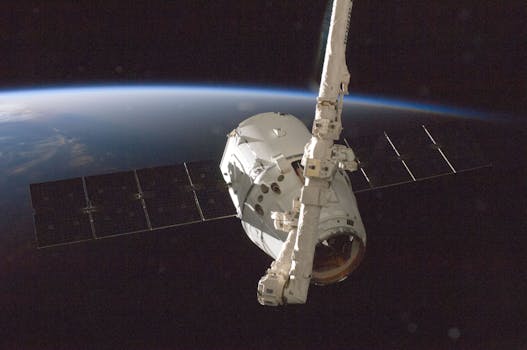
LEO Satellites are at the forefront of a revolution in global connectivity, offering a new era of faster, more reliable, and wider coverage than traditional satellite systems. The Focus Keyword LEO satellites have become a crucial component in the rapidly evolving satellite technology landscape. With their ability to provide low-latency, high-speed connectivity, LEO satellites are poised to play a vital role in bridging the digital divide and enabling a wide range of applications, from broadband internet to IoT connectivity.
One of the primary advantages of LEO satellites is their ability to provide low-latency connectivity. Unlike traditional geostationary satellites, which are located approximately 36,000 kilometers above the equator, LEO satellites orbit the Earth at an altitude of around 160 to 2,000 kilometers. This proximity to the Earth’s surface enables them to offer significantly reduced latency, making them ideal for real-time applications such as video conferencing, online gaming, and virtual reality.
Another significant benefit of LEO satellites is their ability to provide global coverage. By deploying a constellation of LEO satellites, it is possible to offer seamless, worldwide connectivity, even in areas where traditional communication infrastructure is lacking. This makes LEO satellites an attractive solution for a wide range of applications, including maritime communications, aviation, and rural broadband.
LEO satellites also offer a high degree of flexibility and scalability. Unlike traditional satellite systems, which are often designed to serve a specific region or application, LEO satellites can be easily reconfigured to meet changing demands. This flexibility, combined with the ability to launch new satellites quickly and efficiently, makes LEO constellations an attractive solution for a wide range of industries, from telecommunications to finance.
Despite the many advantages of LEO satellites, there are also challenges associated with their deployment and operation. One of the primary concerns is the risk of collisions with other satellites or space debris. As the number of LEO satellites in orbit increases, so too does the risk of accidents, highlighting the need for careful planning, coordination, and regulation.
Regulatory frameworks are also essential for ensuring the safe and responsible deployment of LEO satellites. Governments and international organizations are working to establish clear guidelines and standards for the operation of LEO satellites, including regulations related to spectrum allocation, licensing, and environmental impact.
In addition to regulatory frameworks, technological advancements are also playing a crucial role in the development of LEO satellites. Advances in areas such as propulsion systems, power generation, and communication protocols are enabling the creation of more efficient, reliable, and cost-effective LEO satellites.
Several companies, including OneWeb, SpaceX, and Amazon’s Kuiper Systems, are already investing heavily in the development of LEO satellite constellations. These constellations are expected to offer a wide range of services, from broadband internet to IoT connectivity, and will likely play a significant role in shaping the future of global connectivity.
As the LEO satellite industry continues to evolve, we can expect to see significant advancements in areas such as satellite design, launch technology, and ground infrastructure. With their potential to provide low-latency, high-speed connectivity, LEO satellites are poised to revolutionize the way we communicate and access data, and will likely play a vital role in bridging the digital divide and enabling a wide range of applications.
In conclusion, LEO satellites are transforming the way we communicate and access data, offering faster, more reliable, and wider coverage than traditional satellite systems. With their ability to provide low-latency, high-speed connectivity, LEO satellites are poised to play a vital role in a wide range of applications, from broadband internet to IoT connectivity. As the LEO satellite industry continues to evolve, we can expect to see significant advancements in areas such as satellite design, launch technology, and ground infrastructure, ultimately leading to a more connected and equitable world.
